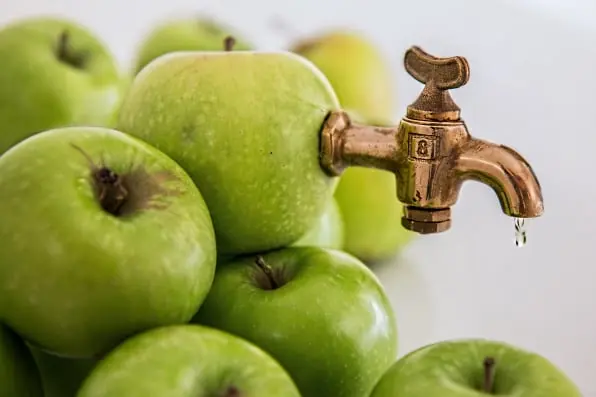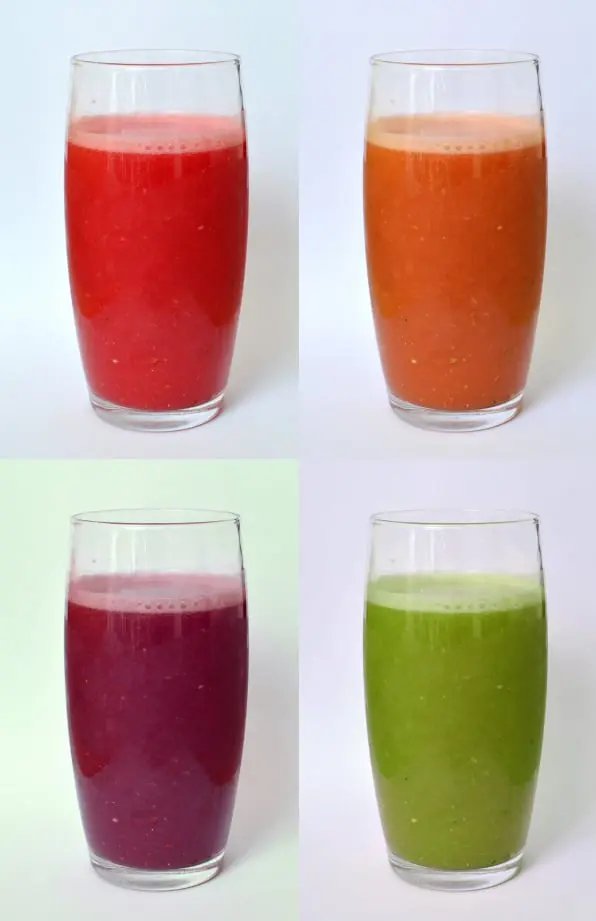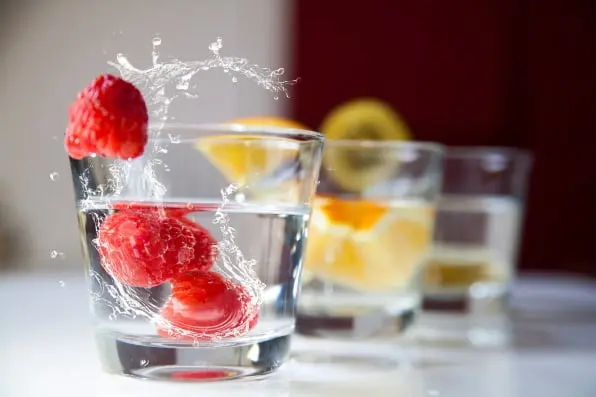Fruit juice concentrate Traceability app:
Fruit juice concentrate Traceability app thru fruit juice extraction and pressing, fruit juice concentrate bottling, maintain consistent fruit juice Traceability.

Fruit juice concentrate Supplier Traceability & management
With multiple ingredients in every recipe, the fruit product supplier needed to know where each ingredient came from and how much was used. The ability to track their products in precise detail would allow them to fine-tune their recipes. In addition, should there ever be a problem with the quality of one of their products, they would be able to understand exactly which batches had issues. This would allow the company to prevent an unnecessary recall of unaffected products. In addition, the supplier would know which ingredient provider was of concern and immediately address them. The previous method of tracking ingredients was done on paper and the information was manually entered back into the system. This system resulted in many errors.
The Solution
TME® MES (Manufacturing Execution System) by MASS Group captures and manages the genealogy and traceability requirements. TME® MES captures and references a complete genealogy record of products. This includes complete multi-level detail and enables immediate electronic data recall of product, process, resource and asset information. Handheld mobile computers with scanners and advanced data capture options combined with integrated wireless LAN/PAN provide real-time data collection.
The Results
An operator starts with a list of ingredients to pull for use in production of the product. The list of ingredients gets downloaded into a handheld unit. An operator pulls the various ingredients and scans them with the handheld unit as they are pulled and enters the quantity pulled into it. Each ingredient is uniquely identified by its origin. The information captured includes date, quantity, genealogy, manufacturer ID, and product expiration date. The information is stored, managed, and reported using MASS Group’s TME® MES software.
Quality control technicians test the sample of the product and can override the system and tell the operator to pull more ingredients to modify the recipe as necessary. The additional ingredients are then uploaded into the system for an exact accounting of what was included in the recipe. The customer now has complete access to all of their ingredient history and origins. Because the entire system is automated, they have decreased manual labor costs of tracking these items manually, and the chance for error has been completely eliminated.

Fruit juice concentrate Traceabilitys during production
View App Specifications.
Fruit juices, especially lemon juice, are the most targeted food goods for adulteration and fraud in Iran. The aim of this study was to investigate the profile and concentration of free primary amino acids as a marker for adulteration in lemon juice.
Materials and Methods:
Amino acids were determined with high-performance liquid chromatography fluorescence. The limit of detection and limit of quantification were in the range of 0.008–0.01 ng/ml and 0.03 ng/ml, respectively.
Results:
The method is suitable for distinguishing authentic juices from drinking products that may contain little or no fruit juice. In our study, total amino acid concentration in natural lemon was 13.15 mmol/l and in other brands was in the range of 1.81–14.84 mmol/l. Further, the concentration of aspartic acid, glutamic acid, asparagine, and serine was more than other amino acids. The findings showed that only brands 1 and 2 were considered similar to natural lemon juice.
Conclusion:
The present study demonstrated that the concentration of the first four amino acids can use as a marker to determine lemon juice adulteration.
Introduction
The originality of fruit juice is so important for consumers. Fruit juice is the liquid obtained from fresh fruits without the chemical process.[1] Among fruit juices, lemons have a special place in the Iranian household's food basket and contain high amounts of natural antioxidant compounds.[2] With the advancement of chemistry, serious and widespread food adulteration occurred. Lemon juice is one of the cases in which fraud has been carried out since past times.[34] Adulteration usually points out to blending matters with inferior or sometimes detrimental material in foodstuffs or drink intended to be sold.[5] Adulteration included the replacement of one material or substance instead of the other, for example, a manufactured product is labeled improperly, or dosage information does not meet the requirements.[6] For the detection of fruit juice authenticity, chemical, biomolecular, and isotopic procedures could be used depending on the structure of matter for obtaining the target information.[7]

Fruit juice concentrate Traceability & management
Food fraud, being the act of intentional adulteration of food for financial advantage, has vexed the consumers and the food industry throughout history. According to the European Committee on the Environment, Public Health and Food Safety, fruit juices are included in the top 10 food products that are most at risk of food fraud. Therefore, reliable, efficient, sensitive and cost-effective analytical methodologies need to be developed continuously to guarantee fruit juice quality and safety. This review covers the latest advances in the past ten years concerning the targeted and non-targeted methodologies that have been developed to assure fruit juice authenticity and to preclude adulteration. Emphasis is placed on the use of hyphenated techniques and on the constantly-growing role of MS-based metabolomics in fruit juice quality control area.
Keywords: fruit juice, authenticity, quality, analytical techniques
Go to:
1. Introduction
The globalization of the food trade and world food markets over the last few decades have made an enormous variety of food products available to consumers and the demand for high quality food products is constantly increasing. Economically Motivated Adulteration (EMA) of food, also known as food fraud, is the intentional adulteration of food for financial advantage [1]. According to the Global Food Safety Initiative (GFSI), “food fraud is a collective term encompassing the deliberate and intentional substitution, addition, tampering or misrepresentation of food, food ingredients or food packaging, labelling, product information or false or misleading statements made about a product for economic gain that could impact consumer health” [2]. Fraudulent acts, such as the adulteration with cheaper ingredients and the false claim of origin (geographical or varietal), reduce the quality of the products, mislead the consumer and may even imply a health risk. Thus, food authenticity is a major concern for all involved in the food trade: consumers, consumer protection authorities and also producers and dealers.

Daily Fruit juice concentrate factory hygiene checklist
Qualitative and DNA analysis can be performed by taking a multidisciplinary approach to evaluate apple juices, the relevant values of which are a function of the origin, processing method and cultivar used. In detail, the aims of this study were to characterize apple juices through physiochemical analysis, sensory analysis and DNA analysis to evaluate the efficiency of simple sequence repeat (SSR) markers for cultivar identification. Six apple juices made with cv Golden Delicious, cv Granny Smith and a mix of these cultivars from an e-commerce platform (Samples A and B), DISAFA (Samples C and D) and a local farm (Piedmont, Italy) (Samples E and F) were considered. Apple juices A, B, E and F (clarified and pasteurized) can be considered as being of high quality, while Samples C and D were unclarified, unpasteurized and made with apples purchased from a local store. Considering the qualitative analysis, it was observed that the cultivar of apple affected the parameters assessed. In the case of total phenolic compounds, the highest values were observed for juices made only with cv Granny Smith, suggesting how this cultivar contributes to maintaining these nutraceutical compounds more than cv Golden Delicious. Regarding DNA analysis, a limited number of markers, i.e., 4 and 3, respectively, for the apple juices originating from e-commerce and a local farm could successfully produce reproducible amplified fragments. These results can be related to the different procedures used in processing apple juices of different origins.
1. Introduction
The apple is one of the most important fruits in the world, with 87,236,221 tonnes produced per year. China (54%) and the European Union (EU) (15%) are the main consumers of fresh apples. Due to the high production, globally, the apple crop produces ~4 million tons of waste a year, and juice production is one of the most developed industrial sectors able to absorb apple waste [1]. Among all of the fruit juices, apple juice is second in the market in terms of the global demand for flavor [2].
The quality and authenticity of apple juice are elements of primary importance. Actions such as dilution with water, the addition of sugars or organic acids and replacing or mixing the juice with a cultivar of lower value, or of lower quality from an organoleptic point of view, are economic adulteration. They can compromise the image of the product itself, as well as cause damage to the consumer and the market. The authenticity of fruit materials becomes a serious problem when juices and related items are in short supply or are very expensive.
The fruit content, viscosity, color, browning index and natural flavor are some of the parameters used to evaluate the suitability of fruit juice, but the origin of the raw material (e.g., the cultivar, geographical origin and production mode, such as organic) and the type of processing (industrial or artisanal from a short supply chain) can influence the expectation of consumers, also affecting their attitude to purchase and consume. Among the different analytical techniques able to evaluate and detect the different causes of adulteration (e.g., the addition of or dilution with water, the addition of sugar or acidifying agent adulterants, the adulteration of freshly squeezed juice with concentrated fruit juice), DNA-based methods are largely employed, since DNA can also be recovered in enough quality and quantity in heavily processed food matrices [3,4]. Molecular marker-based methods have been found to be particularly effective in the identification of several crops used in the industry [5,6,7,8]. For many products of plant origin, it is necessary to know not only the species, but also the cultivar; this is because, in the supply chain industry, the market prices of a product are largely dependent on the variety cultivated [9].
Among the DNA-based markers, simple sequence repeats (SSRs) have proved very